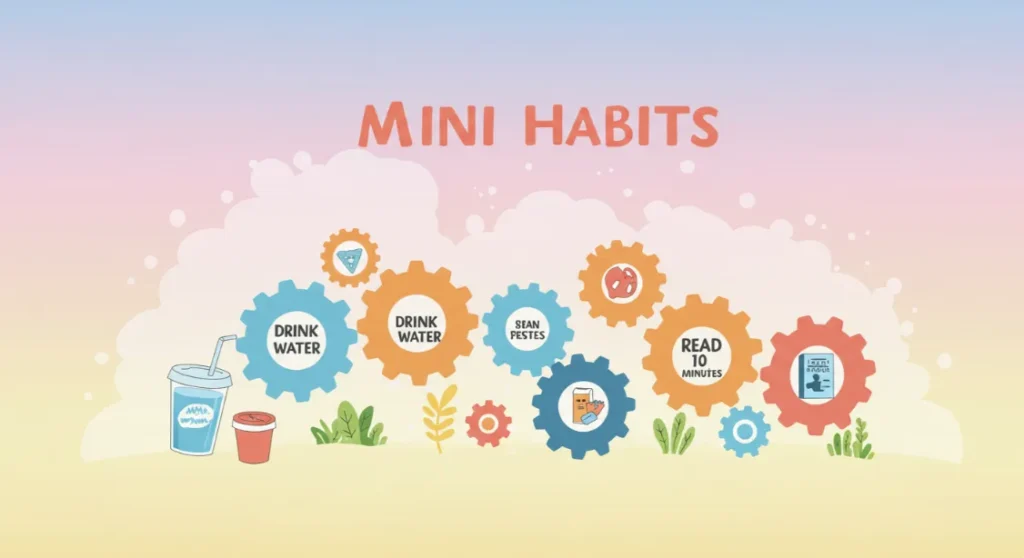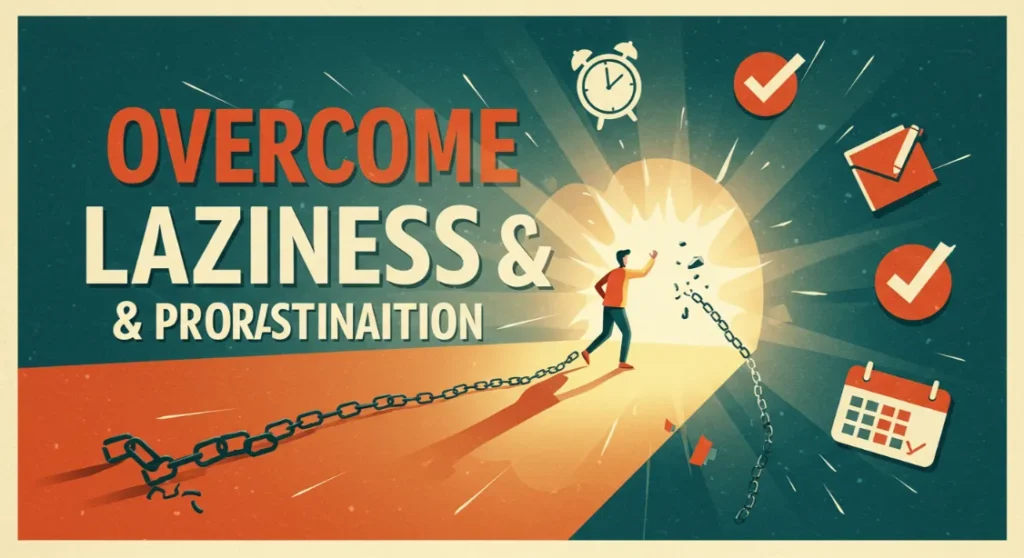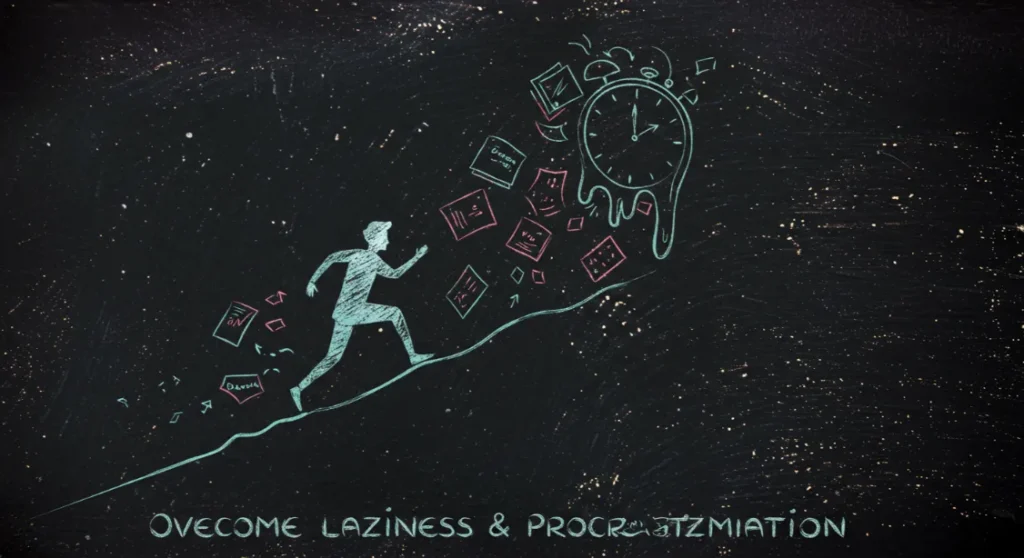Ever caught yourself putting off important tasks, only to find you’ve accomplished a bunch of other stuff instead? You’re not alone! Did you know that 88% of the workforce admits to procrastinating at least one hour a day? That’s a whopping 5 hours per week!
What if I told you you can turn this unproductive habit into a powerful tool for success? Welcome to the world of productive procrastination!
Key Takeaways
- Productive procrastination can boost overall productivity and creativity.
- Identify tasks that are beneficial but less urgent for productive procrastination.
- Use the “two-minute rule” to tackle small tasks during procrastination periods.
- Set time limits for productive procrastination to maintain balance.
- Reflect on your procrastination patterns to optimize your approach.
- Harness the power of productive procrastination to overcome perfectionism.
What is productive procrastination?
Imagine you’re supposed to be working on a big project, but instead, you find yourself organizing your desk or brainstorming ideas for a future task. That’s productive procrastination in action! It’s like taking a detour on your productivity journey—you’re still moving forward, just not on the main road.
Productive procrastination is all about making the most of your procrastination tendencies by engaging in tasks that are still beneficial, even if they’re not your top priority. It’s a way to keep your momentum going when you’re feeling stuck or overwhelmed by your main task.
The Science Behind Productive Procrastination
You might be wondering, “Is this just a fancy way of justifying my procrastination?” Not quite! Research shows that strategic procrastination can actually boost creativity and problem-solving skills.
When we step away from a challenging task, our brains continue to work on it in the background, often leading to “aha!” moments when we least expect them. A study published in the Journal of Personality and Social Psychology found that people who engaged in moderate levels of procrastination were often more creative than those who always tackled tasks immediately.
It’s like giving your brain a chance to marinate in ideas before serving up the main course!
Identifying Productive Procrastination Activities
So, how do you know if your procrastination is productive? Here’s a handy table to help you distinguish between productive and unproductive procrastination:
| Productive Procrastination | Unproductive Procrastination |
|---|---|
| Organizing your workspace | Scrolling social media |
| Reading industry articles | Binge-watching TV shows |
| Brainstorming future projects | Playing video games |
| Updating your to-do list | Excessive snacking |
| Learning a new skill | Gossiping with coworkers |
The key is to choose activities that align with your long-term goals or contribute to your overall productivity. Focusing on one taskat a time, even if it’s not your main priority, can still move you forward.
Strategies for Productive Procrastination
Now that we know what productive procrastination looks like, let’s explore some strategies to make the most of it:
1. The Two-Minute Rule

When you’re procrastinating, look for tasks that take two minutes or less to complete. This could be sending a quick email, filing a document, or making a short phone call. These small wins can give you a sense of accomplishment and build momentum.
2. Set time limits.
Give yourself a specific amount of time for productive procrastination. For example, “I’ll spend 20 minutes organizing my files before tackling my main project.” This helps prevent your procrastination from spiraling out of control.
3. Create a “Procrastination To-Do List.”
Keep a list of productive tasks you can turn to when you’re feeling stuck on your main project. This could include things like updating your resume, researching industry trends, or brainstorming ideas for future projects.
4. Use the Pomodoro Technique

Work on your main task for 25 minutes, then take a 5-minute break for productive procrastination. This structured approach can help you maintain focus while still allowing for beneficial breaks.
Overcoming Perfectionism Through Productive Procrastination
One of the hidden benefits of productive procrastination is its ability to help us overcome perfectionism. When we’re stuck on a task because we’re afraid it won’t be perfect, engaging in productive procrastination can help us build confidence and momentum.
By accomplishing smaller, less daunting tasks, we remind ourselves of our capabilities and gradually build up the courage to tackle the bigger, more intimidating projects. It’s like warming up before a big race—you’re getting your productivity muscles ready for action!
The productivity paradox: when less is more

Here’s a mind-bending concept: sometimes, doing less can actually help you achieve more. This idea, known as the productivity paradox, suggests that periods of apparent inactivity or procrastination can lead to greater overall productivity.
Think about it like this: when you’re constantly pushing yourself to work non-stop, you risk burnout and decreased efficiency. But when you allow yourself strategic breaks (aka productive procrastination), you give your brain a chance to recharge and approach tasks with renewed energy and creativity.
Harnessing the Power of Productive Procrastination
To really make productive procrastination work for you, try these advanced techniques:
1. Task Batching

Group similar productive procrastination activities together. For example, dedicate a procrastination session to all your email-related tasks or social media updates for your business.
2. Skill Building

Use your procrastination time to learn faster and better. Pick up a new skill that could benefit your career or personal growth, like learning a new language or mastering a software tool.
3. Creative Exploration

Allow yourself to explore creative ideas during procrastination periods. This unstructured time can lead to innovative solutions for your main projects.
The Procrastination-Productivity Balance
While productive procrastination can be a powerful tool, it’s important to maintain balance. Here’s a table to help you find the sweet spot:
| Too Little Procrastination | Balanced Approach | Too Much Procrastination |
|---|---|---|
| Burnout and stress | Increased creativity | Missed deadlines |
| Lack of fresh ideas | Better problem-solving | Unfinished projects |
| Decreased overall productivity | Improved work-life balance | Chronic underachievement |
Remember, the goal is to use procrastination strategically, not to avoid your important tasks indefinitely. Managing work stress effectively is crucial for maintaining this balance.
Conclusion: Embracing the productive procrastinator in You
Productive procrastination isn’t about avoiding work—it’s about working smarter. By recognizing the potential in those moments when you’re not quite ready to tackle your main task, you can turn procrastination from a productivity thief into a secret weapon for success.
So the next time you find yourself procrastinating, don’t beat yourself up. Instead, ask yourself, “How can I make this moment productive?” With practice, you’ll develop a knack for turning those “off-task” moments into opportunities for growth, creativity, and accomplishment.
Remember, it’s not about being busy all the time—it’s about making progress, even when it feels like you’re taking the scenic route. Embrace your inner productive procrastinator, and watch your overall productivity soar!